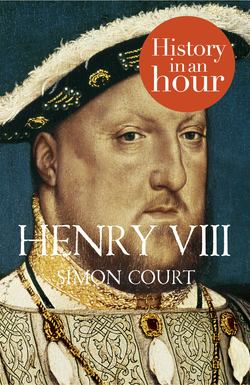Читать книгу Henry VIII: History in an Hour - Simon Court - Страница 5
The ‘Virtuous Prince’
ОглавлениеPrince Henry was never meant to be king. Born on 28 June 1491 at Greenwich Palace, he was the second son of Henry VII and Elizabeth of York, the first son being Arthur, Prince of Wales. Henry received a first-rate classical and theological education from private tutors, and became fluent in Latin and French. He was also taught to play a number of musical instruments and later composed music (although the long-held belief that he wrote ‘Green Sleeves’ is probably false). In 1501, Arthur, aged 15, was married to Catherine of Aragon, almost 16 years old, the youngest surviving child of King Ferdinand II of Aragon and Queen Isabella I of Castile. But disaster struck within a year when Arthur, who was not of robust health, died of pneumonia. Their marriage was probably never consummated.
This tragedy propelled the young Henry, who was only 10 years old, firmly into the spotlight, as the sole male heir to the Tudor dynasty. His father protected him from performing many duties or making public appearances, and he must have been relieved when his second son grew into a fit, athletic young man, standing head and shoulders above his contemporaries. Henry became a skilled horseman, jouster, tennis player and dancer, and possessed great skill in archery and hurling the javelin. By 1508 he was to be seen at Richmond practising tilting for many hours.
Henry VII died on 21 April 1509, and the young Henry, aged 17, became king. In deference to his parents’ wishes, he immediately announced that he would marry Catherine of Aragon and, in spite of their six-year age difference, they initially made a happy couple. Catherine conceived within a few weeks of their marriage but, in what proved to be an ominous portent, she was delivered of a stillborn girl. Within four months, however, Catherine had conceived again, this time giving birth on New Year’s Day 1511 to a boy, named Henry.
The nation rejoiced at the news, and the king celebrated by jousting under the name of Coeur Loyale (‘loyal heart’) and laying his trophies at his lady’s feet, as befitting a gallant knight.
Catherine of Aragon watching Henry VIII of England joust, College of Arms, early sixteenth century
Yet tragedy struck again seven weeks later when the baby Henry died. Catherine, a devout Catholic, retreated into her devotions; Henry, after a bout of self-doubt and self-pity, turned his energies towards war against France. He knew that the best way for a young ruler to establish his international power and prestige was through warfare, so it was natural for him to pick on one of the two traditional enemies of the English, namely the Scots or the French. But behind this public foreign policy lay a set of deeply held personal beliefs about what it was to be a ruler of men.
